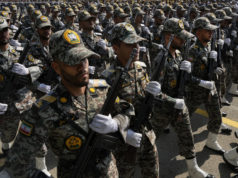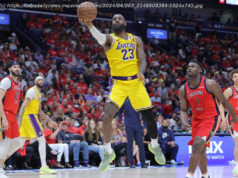It’s a race to be part of MLS expansion, and North Carolina FC fares better in some categories than others. NCFC soccer club is making a run to bring an MLS team to the Triangle.
Major League Soccer has 22 teams, has already awarded franchises to Los Angeles (which joins next year, giving the city two teams) and Miami (which will join if and when a stadium deal can be reached) and wants to get to 28.
That’s 24 down, four to go. The announcement of which two teams are next up will be later this year, and could be around the time of MLS Cup in the fall.
No pro or con exists in a vacuum. Getting a team is about how Raleigh’s market stacks up against Detroit, Charlotte and the nine others.
Sacramento, one of 12 hopeful bids, has all its ducks in a row, and is the odds-on favorite to get a team.
The four factors to getting an MLS franchise are simple: stadium, ownership group, support and market size.
Here’s how the North Carolina FC has dealt with these four factors:
Before Wednesday’s announcement, there was nothing concrete about NCFC’s plans to build a stadium, and a lack of a stadium plan could kill a potential bid (unless you’ re an MLS “chosen one” like Miami – in which case you get unlimited time to work it out) .
Asking to enter a public-private partnership for one isn’ t ideal, but it is common among the hopefuls. As Sports Illustrated’s Brian Straus detailed last month, only a handful of the 12 groups angling to put a team in MLS have a firm stadium plan.
St. Louis, San Diego, Detroit and Charlotte have all had various hangups.
At best, NCFC can consider its stadium situation to be in the running with San Antonio, Cincinnati, Nashville, Tampa Bay and Phoenix as teams that are standing on more solid ground than the others.
When NCFC was known as the Carolina RailHawks and owned by Traffic Sports, which also operated the NASL at the time, this was a non-starter for any MLS hopes.
But Malik is an owner with local ties who is willing to put in $150 million to help fund the downtown Raleigh stadium project that won’ t need public money but will need the state government to agree to develop the land. He’s also taken a leadership role in NASL in a short period of time.
This earns big points, but it’s not a deciding factor by itself.
The franchise fee is $150 million, and there are some big names funding other campaigns to join MLS. U. S. soccer star Landon Donovan was involved with San Diego (though that effort seems to have died out) , Cleveland Cavaliers owner Dan Gilbert is behind the Detroit bid and the San Antonio Spurs are behind the bid in their own town.
Phoenix and Tampa Bay seem to have strong groups as well: Neither has asked for public funds to get their stadiums done, though they still have to prove they can build the desired site.
Fan support has ebbs and flows.
Rochester was once discussed as a potential MLS team because it could draw more than 9,000 per game to Division 2 games. Now? It’s in Division 3 averaging a little more than 3,600 per game and won’ t be sniffing MLS talk anytime soon.
But this swings both ways. The Seattle Sounders have one of the most fervent fan bases in MLS, but averaged less than 4,000 in their last two years of Division 2 play.
But there is an added benefit to awarding MLS franchises to cities that have shown support for the sport even at a lower level.
Five of last year’s top nine MLS teams in attendance were ones that were playing in the lower divisions in the last decade – Seattle, Portland, Vancouver and Montreal, which were Division 2 foes of the former Carolina RailHawks, while Orlando made the jump from Division 3.
The MLS teams that average fewer than 20,000 fans per game are all older franchises, save for Philadelphia, which was awarded an expansion franchise and started play in 2010.
NCFC has the fourth-highest average attendance in the NASL with 4,425 so far this season and it was sixth last year with 5,058 before the rebrand. That’s behind what Indianapolis (8,396 in 2016) , Tampa Bay (5,878 in 2016) and San Antonio (6,170 in 2016 in Division 3) have been drawing.
Cincinnati averaged more than 17,000 last year as a first-year Division 3 team.
NCFC’s burgeoning youth development program, which ranks it one of the largest in the U. S., is part of the equation as well. Generations of soccer players will have an attachment to the local team, and that can’ t be a bad thing.
This one is threefold: metro area size, TV market size and location.
Location: This is simple: There’s a hole in the MLS map between Atlanta and Washington D. C. and it’s unlikely MLS would need to add Charlotte and the Triangle to fill it. It’s the same question Tampa Bay faces with a team in Orlando and one on the way in Miami.
Staying ahead of Charlotte is always going to be important in Malik’s quest. Wednesday’s announcement helps.
Metro area size: This is how many people live in the general area and a good indicator of how likely it is to fill the stadium on a regular basis. The Triangle gets grouped into Raleigh-Durham-Chapel Hill metro area, which is 44th in the country (estimated at about 1.3 million people) and only ahead of Salt Lake City as far as current MLS markets go.
Phoenix, Tampa, San Diego and St. Louis are top-20 in this category. Charlotte is 22nd with San Antonio, Sacramento and Cincinnati not far behind. This puts the Triangle on the same plane as Indianapolis (34th) and Nashville (36th) , though it should be noted that the Triangle is growing at a faster clip (estimated 15.25 percent from 2010-16) than any market ahead of it aside from Austin (a 19.82 percent rise) .
TV market size: TV markets are bigger than metro areas (for instance, San Jose isn’ t included in the San Francisco metro area but is part of the same TV market) . NCFC belongs to the Raleigh-Durham-Fayetteville market.
And TV market might be the most important figure in all of this.
Yes, there is some disruption in how media is consumed, but TV markets are still how sports leagues negotiate broadcasting deals with sports networks, who in turn can sell ads at a higher price if they’ re in more markets and homes.
MLS has been expanding into nearly every top 25 TV market in the country, and this time the Triangle gets paired with the Sandhills in what’s traditionally called the Raleigh-Durham-Fayetteville market.
In this category, NCFC ranks 24th, ahead of a few current MLS markets like Portland, Kansas City and Salt Lake City.
It’s well behind three hopeful markets – Tampa (No. 11) , Phoenix (No. 12) and Detroit (No. 13) – and close behind three others – Sacramento (No. 20) , St. Louis (No. 21) and Charlotte (No. 22) . But it’s still ahead of San Diego (No. 28) , San Antonio (No. 31) , Nashville (No. 29) , Indianapolis (No. 27) and Cincinnati (No.
Домой
United States
USA — Sport The 4 most important factors in joining MLS, and how North Carolina...






